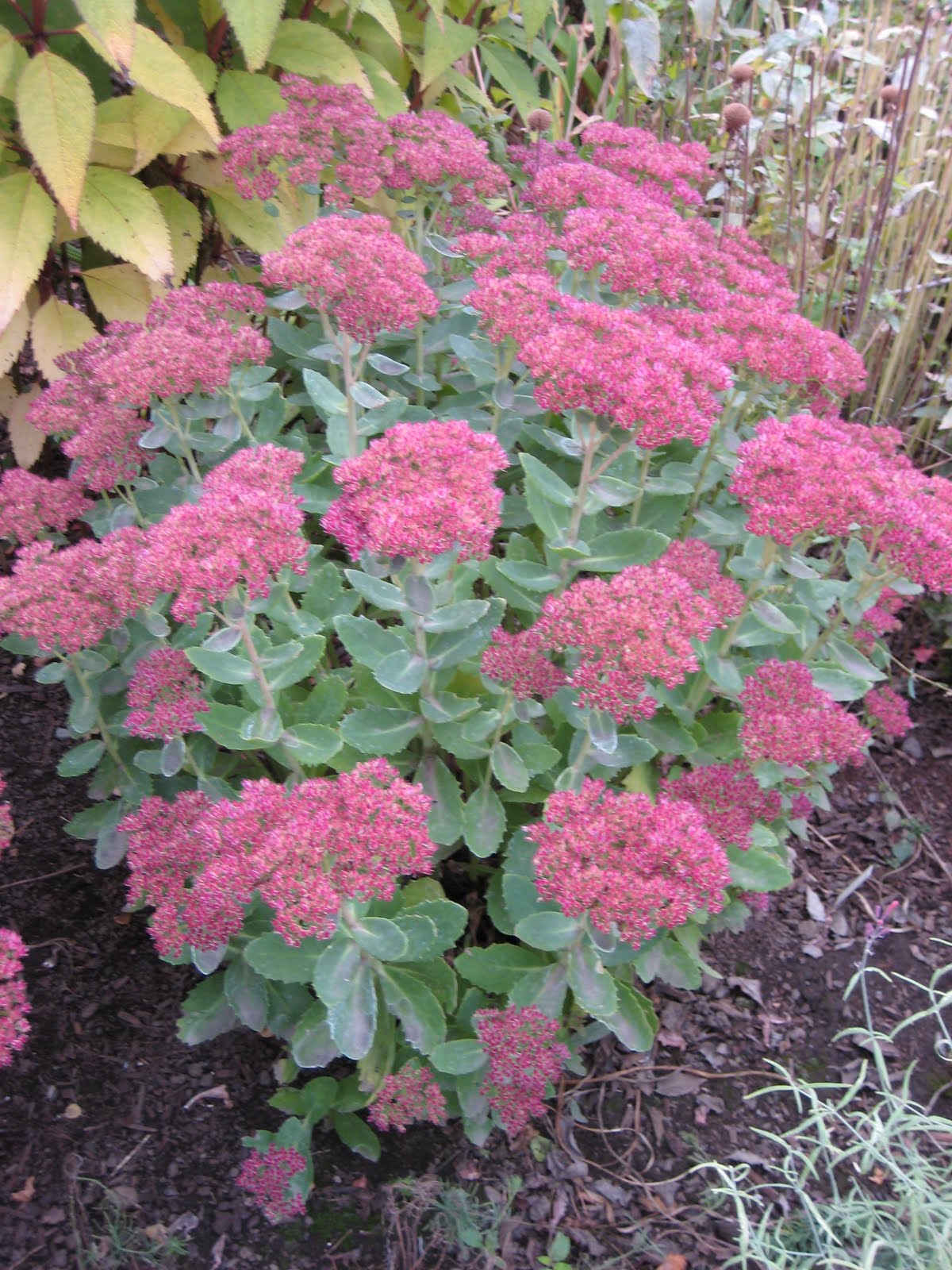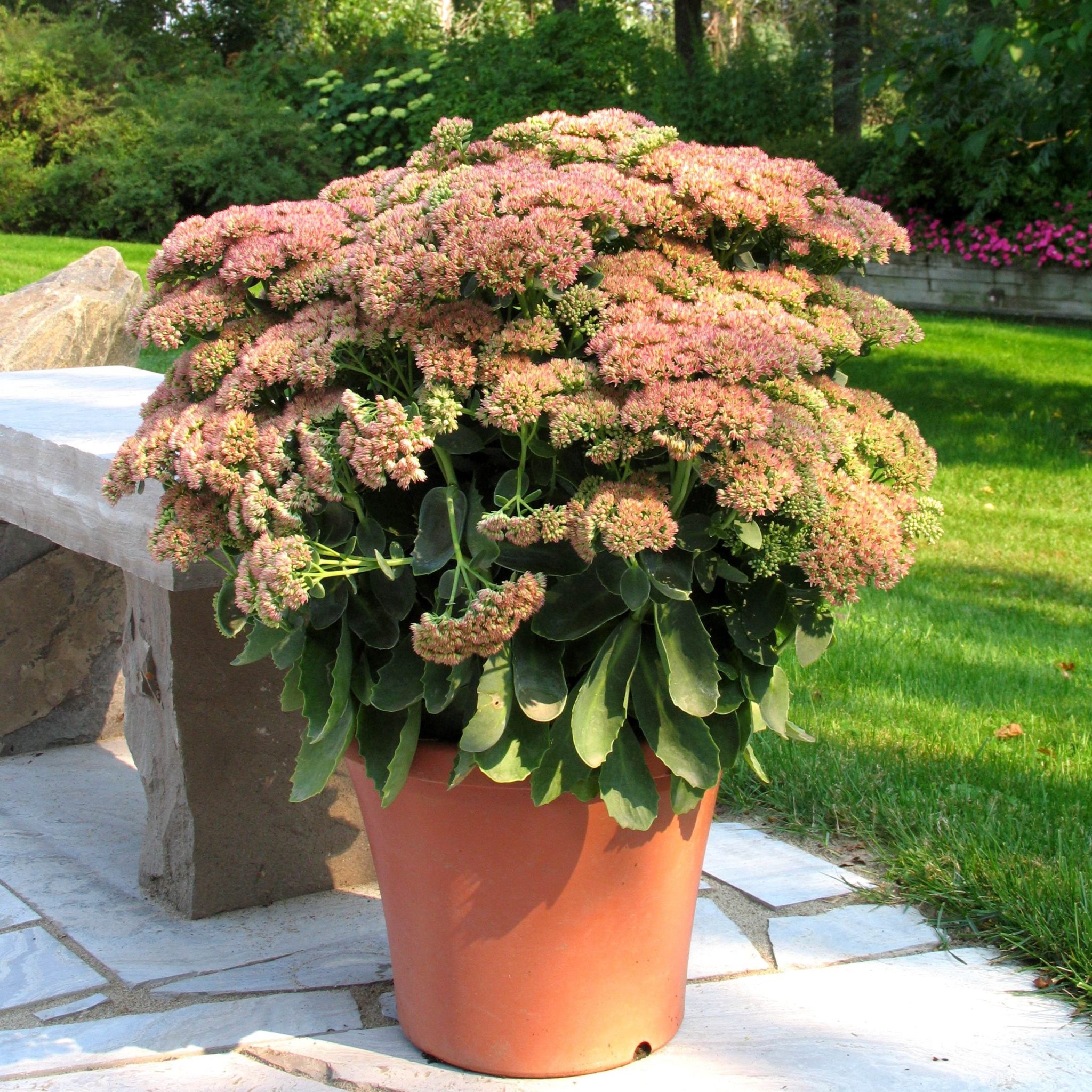

You can grow it as a houseplant, but honestly, it doesn’t bloom great and is much happier outdoors, soaking up the heat and humidity of summer. It’s best to divide perennials in spring or fall, not in the heat of summer. Replant elsewhere in the garden, and water well. It’s one of the easiest perennials to divide, so don’t be shy about cutting through the roots. Yes! When your clump gets too large, or if you want to make another plant (for free!), simply use your garden spade to take off a piece from the edges. In very hot, dry summers, water it occasionally. It’s not totally necessary, but you can give it a handful of all-purpose fertilizer in early spring, if you like, when you’re feeding all your other perennials. Look closely: Tiny green buds start pushing through the crown of the plant in early to mid spring. Next spring, don’t be too eager to pull your plant up if it seems dead. Hylotelephium spectabile Autumn Joy Stunning succulent cottage plant with large, pink flower heads Flowers throughout summer and autumn Fleshy green. If planting in the fall, make sure to get it in at least six weeks before the ground freezes in your area in order to allow it to get established before winter.Īfter a freeze, it's fine to trim off the foliage or leave it intact over the winter. Backfill the soil, tamp down, and water well.

When planting, dig a hole about twice as wide as the nursery pot it came in, then place the plant in the hole so that it’s at the same depth as it was in the pot. If you give Autumn Joy too much shade, it will stretch toward the sun and become leggy.
AUTUMN JOY SEDUM IN POTS FULL
It eventually reaches about two feet tall and three feet wide.įind a spot in full sun, which is considered 6 or more hours of direct sunlight per day. It doesn’t mind heat and humidity, comes back reliably even after a very cold winter, and tolerates poor soil. It’s is suited for USDA Hardiness zones 3 to 9 (find yours here), so you can grow it in most regions of the country. Here’s what else you need to know about this almost-perfect perennial: Is Autumn Joy sedum easy to grow?Ībsolutely! This is one of the most carefree perennials you can grow, and no garden should be without it.

Other varieties that are similar include more compact types such as Pure Joy, densely-mounded Pride and Joy, and Superstar, which boasts nearly turquoise foliage. The blooms also last for weeks and weeks in a vase, and they dry well, too.Īfter the first heavy frost, the spent flower heads remain a handsome accent in the winter landscape. The flowers are a great source of late-season nectar for pollinators, which flock to the profuse blooms. Plus, it’s one of the least expensive perennials you can add to your garden!Īutumn Joy’s flowers start light pink and deepen to mauve-red throughout the fall. It’s an excellent plant in mixed borders, lining walkways, in rock gardens, or when planted in masses, and Autumn Joy does equally well in pots or garden beds. (Here are more great full-sun perennial plants.) With an upright form, fleshy pale green leaves, and abundant clusters of flowers that appear late in the season when the rest of the garden is winding down, it’s a stellar perennial.

It can be moved outside in summer.There are more than 300 different species of sedum, known popularly as stonecrop, growing around world, but the varietial called Autumn Joy is one of the most popular. A tender sedum, it’s usually grown as a houseplant on a windowsill out of direct sunlight.


 0 kommentar(er)
0 kommentar(er)
